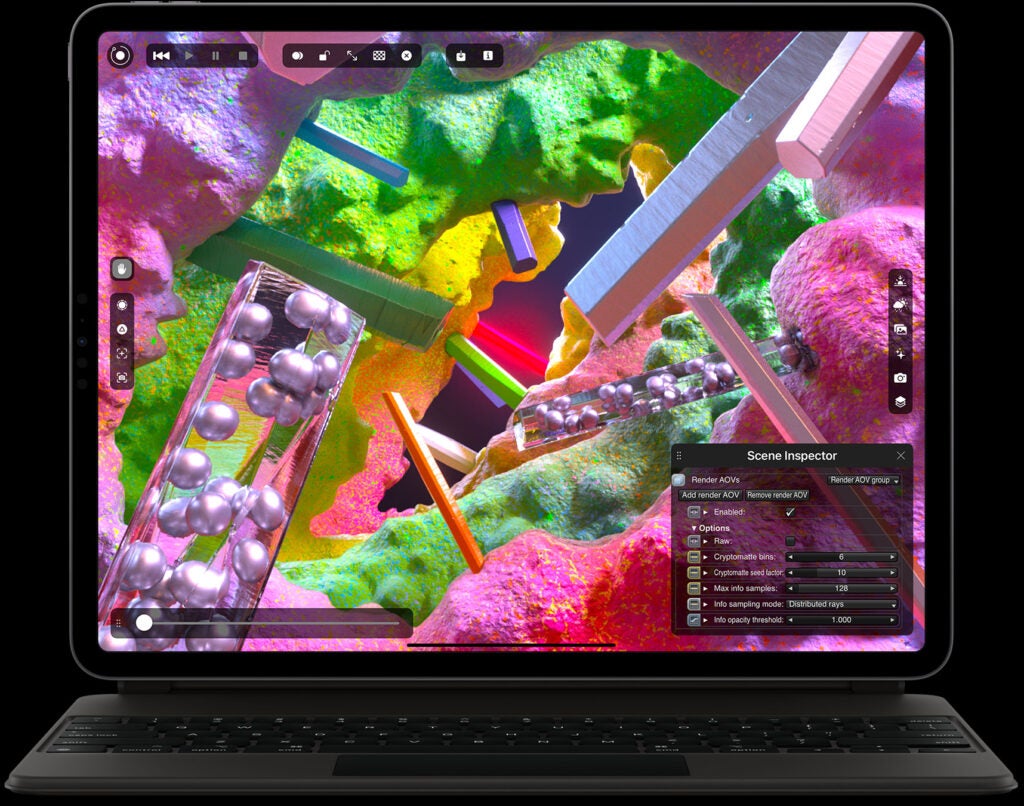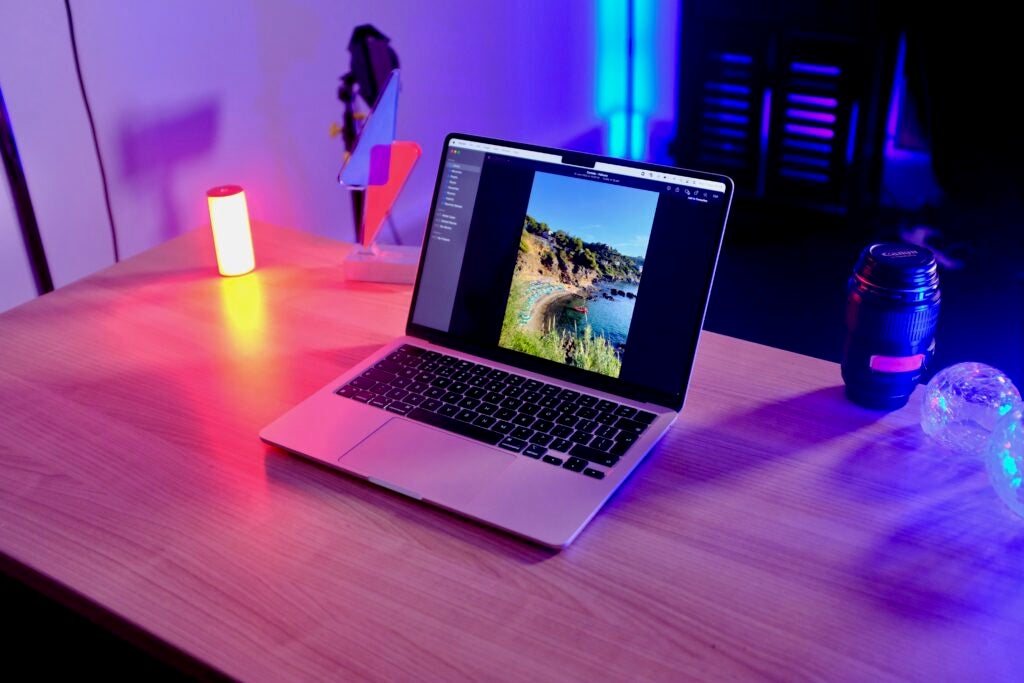Apple has announced a lot of new hardware this past year, including new additions to the iPad Pro and MacBook Air lineup.
Some of the most anticipated improvements were to the iPad Pro series, which came in the form of the iPad Pro M2 this year.
The MacBook Air range has also been treated to an upgrade with the M2 chipset, putting these two devices on equal footing when it comes to their processor.
Before we begin, it’s important to note that we haven’t been able to review the iPad Pro 2022 yet, so we won’t be making any definitive comments about its performance. However, we were able to review the MacBook Air 2022, so we can make some educated guesses as to which device is best for you.
Also, we’ll only focus on the 12.9-inch iPad Pro model, not the 11-inch model, since it’s closer to the MacBook Air in terms of size.
Release date and price
Both the iPad Pro and MacBook Air are available for purchase from the Apple Store and third-party retailers.
Looking at the 12.9-inch iPad model, it comes in five different storage options and comes with a cellular option. We’ve broken down the price differences below.
- 128GB with Wi-Fi: £1,249
- 128GB with cellular: £1,429
- 256GB with Wi-Fi: £1,369
- 256GB with cellular: £1,549
- 512GB with Wi-Fi: £1,599
- 512GB with cellular: £1,779
- 1TB with Wi-Fi: £2,049
- 1TB with cellular: £2,229
- 2TB with Wi-Fi: £2,499
- 2TB with cellular: £2,679
Meanwhile, the MacBook Air comes with three different memory options and three different storage options. The MacBook Air pricing breakdown can also be found below.
- 8GB storage with 512GB storage: £1,549
- 16GB storage with 512GB storage: £1,749
- 24GB storage with 512GB storage: £1,949
- 8GB storage with 1TB storage: £1,749
- 16GB storage with 1TB storage: £1,949
- 24GB storage with 1TB storage: £2,149
- 8GB storage with 2TB storage: £2,149
- 16GB storage with 2TB storage: £2,349
- 24GB storage with 2TB storage: £2,549
Both models also have add-ons that can make the overall price more of an experience, such as engravings and more powerful power adapters. Depending on the configuration you use, the cheapest option is the iPad Pro. However, there isn’t a huge difference in price once you start delving into the higher configurations.
Design and display
Starting with the iPad Pro, it comes with a 12.9-inch Liquid Retina XDR mini-LED backlit display. The resolution is 2732×2048, which Apple claims can achieve 600 nits of brightness in normal use, 1000 nits at maximum brightness and 1600 nits when playing HDR content.
It also offers support for ProMotion, which means you’ll be treated to a 120Hz refresh rate during intensive tasks like editing or scrolling, with the refresh rate dropping down when it’s no longer needed to save battery.
It has support for the 2nd generation Apple Pencil and in terms of ports it has USB-C Thunderbolt 4 as well as a Nano-SIM tray on the cellular models. The Wi-Fi model weighs just 682 grams, while the cellular version is slightly heavier at 684 grams.

The iPad itself comes in two colors: silver and space gray. It has rounded edges and a thin bezel, with few design changes compared to its predecessor, the iPad Pro (2021). There are four speakers, a built-in microphone and the usual volume rockers and a top lock button.
The rear camera module is square and consists of Wide and Ultra Wide cameras, the former being 12MP at f/1.8 aperture and the former being 10MP at f/2.4 aperture with a 125-degree field of view.
Meanwhile, the MacBook Air comes in four colors: Silver, Starlight, Space Gray and Midnight. We thought it looked very similar to the MacBook Pro (2021) 14-inch and 16-inch models. This gives it a larger appearance and lack of a wedge design, with our review noting that it feels very portable thanks to its low weight of 1.24kg.

It comes with two USB-C ports with Thunderbolt 3 support, as well as a MagSafe 3 charging port and a 3.5mm audio jack, which is not included in the iPad Pro. The inclusion of MagSafe means you can charge the laptop without using any of the USB-C ports, although you’ll need to have a MagSafe charger handy.
The screen is 13.6 inches and uses an LED-backlit display, with a resolution of 2560 × 1664 and up to 500 nits of brightness, according to Apple. We were disappointed that the MacBook Air didn’t feature ProMotion technology and instead stuck with a 60Hz refresh rate, meaning screen movement may not feel as smooth as the iPad Pro.
The screen has a notch as Apple thinned the top bezel of the screen, which we didn’t mind. However, we noted that the notch would be more welcome if Apple decided to upgrade its 1080p front-facing webcam.
specifications
Both the iPad Pro and MacBook Air come with the M2 chipset. The iPad Pro comes with an 8-core processor, a 10-core GPU and a 16-core Neural Engine. MacBook Air comes in two variants, the first is identical to the iPad Pro and the second has an 8-core CPU, 8-core GPU and 16-core Neural Engine.
In our review of the MacBook Air, we found that the M2 chip didn’t outperform the M1, and we wouldn’t recommend that anyone pay extra to go from an M1 machine to an M2 machine. However, it still offers fantastic performance, with 4K editing in Adobe’s Premiere Pro easily achievable.

Also, since the iPad model packs the same power as the base MacBook Air, we’d think the iPad Pro would have more than enough power for browsing and would likely be suitable for creative professionals who want to draw and edit on a tablet.
The iPad Pro comes with USB-C Thunderbolt 4 support, which means it can easily be connected to an external display and will transfer files very quickly. Instead, the MacBook Air opted for Thunderbolt 3 technology, which will still allow for fast transfers.

Since we haven’t been able to review the iPad Pro yet, we can’t definitively say which has more power, but since they come with the same processor configuration, we’d expect them to perform similarly. The real difference will be in the interface, as the iPad runs on iPad OS 16 and is a dedicated tablet, while the MacBook Air is a laptop that runs on macOS and will have support for macOS Ventura.
Users who want a powerful tablet can also equip the iPad Pro with a compatible keyboard from Apple or a third-party retailer and use it as a 2-in-1 device, giving it a bit more flexibility than the MacBook Air.
You can check out a more detailed list of the spec differences between each device below.
iPad Pro (2022) and MacBook Air (2022) specifications
Early judgment
Until we have the iPad Pro M2 (2022) for review, we can’t say for sure that one device is better than the other. However, after spending time with the MacBook Air M2 (2022) and reviewing the specifications, it appears that these two devices are very similar, with only some minor changes in terms of software and features.
The main difference is in the hardware design, as the iPad is a tablet and the MacBook is a laptop. If you’re looking for a device for work or school that packs a lot of power, the MacBook Air is probably the best option, as it comes with a built-in keyboard and will be better suited for writing essays and working with multiple windows open.
However, if you want a portable device that has more flexibility and can be used for drawing or taking photos, the iPad Pro is the way to go. It can be paired with a keyboard (sold separately) when needed, and features a large touchscreen and Apple Pencil support, making it ideal for all kinds of creatives.
iPad Pro 2022 vs MacBook Air 2022: Is a tablet or laptop best for you?


